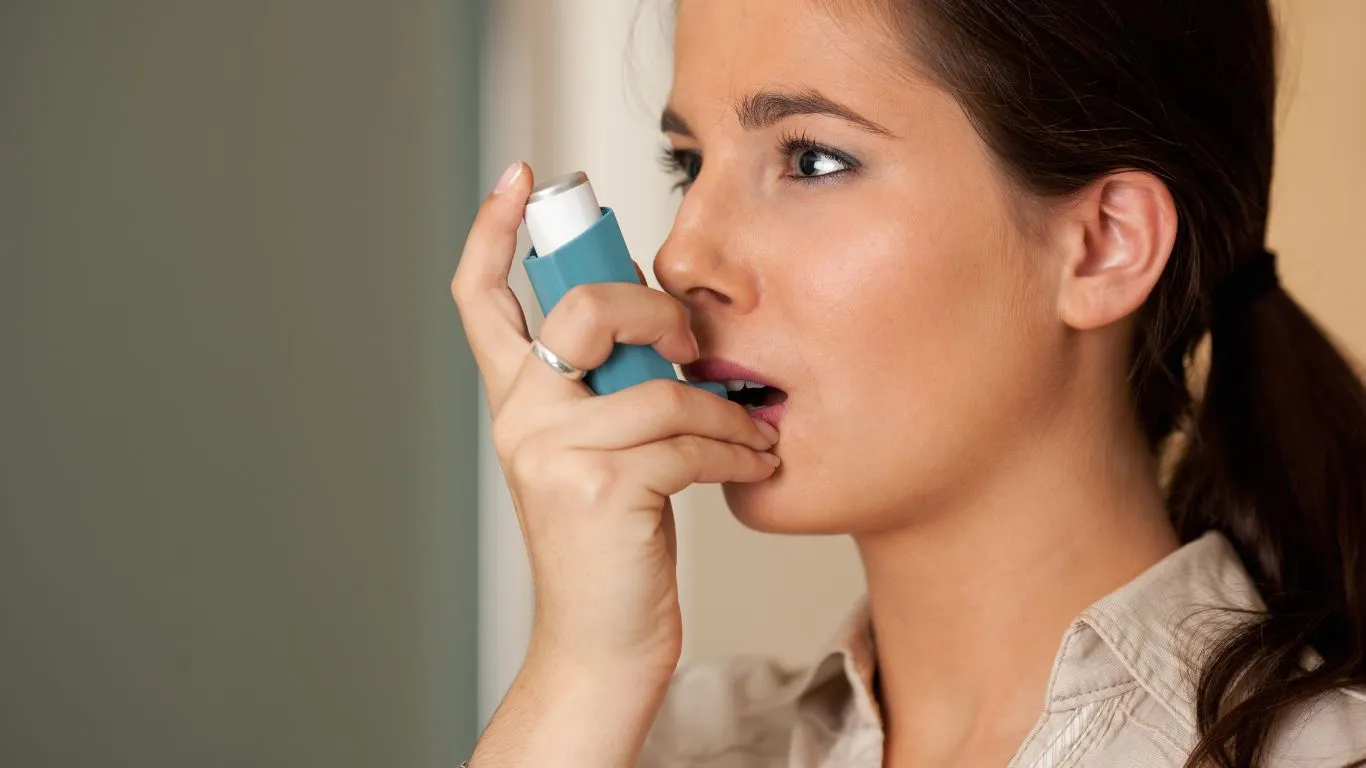Dust Mites and Asthma Solutions: Practical Tips for Managing Allergies
Dealing with asthma and dust mites can be a real challenge. Dust mites are one of the most common indoor allergens and can significantly impact people with asthma. But don’t worry—there are plenty of effective ways to manage this problem and reduce your symptoms. Let’s dive into some practical solutions that can help!
 Dust mites thrive in warm, humid environments, and they can trigger allergic reactions, especially in people with asthma. Their tiny particles are found in bedding, carpets, upholstered furniture, and even stuffed animals. While dust mites themselves can’t be seen with the naked eye, their presence is all too real when it comes to asthma symptoms. Let’s break down how dust mites affect asthma and what you can do to manage it.
Dust mites thrive in warm, humid environments, and they can trigger allergic reactions, especially in people with asthma. Their tiny particles are found in bedding, carpets, upholstered furniture, and even stuffed animals. While dust mites themselves can’t be seen with the naked eye, their presence is all too real when it comes to asthma symptoms. Let’s break down how dust mites affect asthma and what you can do to manage it.
How Dust Mites Affect Asthma
Asthma is a chronic respiratory condition that causes inflammation and narrowing of the airways, making it difficult to breathe. Dust mites are one of the primary triggers for asthma attacks. When people with asthma inhale dust mite allergens, their immune system overreacts, causing symptoms such as coughing, wheezing, shortness of breath, and chest tightness.  Dust mites are particularly problematic because they are tiny and can easily become airborne. When you disturb dust in your home by vacuuming, cleaning, or even just moving furniture, you can stir up dust mite particles that linger in the air. This makes it harder to avoid their effects, especially if you live in a dusty environment or have poor air quality.
Dust mites are particularly problematic because they are tiny and can easily become airborne. When you disturb dust in your home by vacuuming, cleaning, or even just moving furniture, you can stir up dust mite particles that linger in the air. This makes it harder to avoid their effects, especially if you live in a dusty environment or have poor air quality.
5 Effective Dust Mite Solutions for Asthma Sufferers
You might feel like you’re constantly battling these microscopic creatures, but there are several ways you can tackle dust mites and reduce your asthma symptoms. Here are five practical solutions to help you manage:
1. Use Dust Mite-Proof Bedding Covers
One of the easiest ways to reduce dust mite exposure is by using dust mite-proof covers on your pillows, mattresses, and comforters. These covers act as a barrier, preventing dust mites from settling in your bedding. Ideally, these should be made from tightly woven fabric that dust mites can’t penetrate. Look for ones labeled as allergen-proof, which also help to block out other allergens like pet dander and pollen. If you’re allergic to dust mites, making your bed a sanctuary free from these tiny pests is a simple but powerful first step.
2. Regularly Wash Bedding in Hot Water
Dust mites love to make themselves at home in your bedding. To reduce their presence, wash your sheets, pillowcases, and blankets at least once a week in hot water (130°F or 54°C). This will kill any dust mites and remove allergens. If you have stuffed animals or other soft items on your bed, consider washing those too or placing them in a freezer overnight to kill the mites. 
3. Keep Indoor Humidity Low
Dust mites thrive in humid conditions, so keeping your home’s humidity levels in check can make a big difference. Aim for a humidity level of 30-50% in your home. You can use a dehumidifier in damp areas like basements or bathrooms to reduce moisture levels. Using air conditioning in the summer also helps lower humidity, while keeping windows closed during pollen season can prevent additional allergens from entering your home.
4. Vacuum with a HEPA Filter
Vacuuming regularly is important for getting rid of dust, but it’s crucial to use a vacuum cleaner with a HEPA (High-Efficiency Particulate Air) filter. A regular vacuum may just stir up the dust and allergens, making things worse. A vacuum with a HEPA filter traps dust mites and other allergens, preventing them from being released back into the air. Be sure to vacuum carpets, rugs, and upholstery at least once or twice a week.
5. Keep Your Home Clean and Clutter-Free
Clutter is a dust mite’s best friend. The more items you have around your home, the more places dust mites can settle and multiply. Try to declutter your home and reduce the number of soft furnishings like rugs, pillows, and stuffed animals, as these are prime spots for dust mites. Regularly dust hard surfaces with a damp cloth to trap dust rather than letting it settle back into the air. 
Which Areas of the Home Are Most Affected by Dust Mites?
While dust mites can be found throughout your home, some areas are more likely to harbor them. Here’s where you should focus your cleaning efforts:
- Bedrooms: Dust mites love bedding, so focus on regularly cleaning your bedroom.
- Living Areas: Sofas, chairs, and curtains can also be breeding grounds for dust mites.
- Carpets and Rugs: If you have carpets or rugs, they can trap dust mites deep in the fibers.
- Air Vents and Filters: Dust mites can get trapped in air vents and filters, so be sure to clean them regularly.
Conclusion
Living with asthma doesn’t mean you have to be constantly at war with dust mites. By taking a few simple steps like using dust mite-proof covers, maintaining a low humidity level, and cleaning regularly with a HEPA-filter vacuum, you can drastically reduce your exposure to these allergens. Stay proactive, and you’ll notice a significant improvement in your asthma symptoms over time.
Appendices
References
For further information on asthma and dust mites, check out the following resources:
- American Lung Association. (2023). Asthma and Allergies: Managing Dust Mites. Read Article
- National Asthma Council. (2022). Dust Mites and Asthma: Effective Solutions. Read Article
- Smith, A., & Jones, B. (2023). Indoor Allergies and Asthma: Managing Triggers. Journal of Asthma Care, 38(4), 250-255. Read Article
FAQs
- Can dust mites cause asthma attacks? Yes, dust mites are one of the leading triggers for asthma attacks. Their allergens can cause inflammation in the airways, leading to asthma symptoms.
- How often should I wash my bedding to avoid dust mites? Wash your bedding at least once a week in hot water to kill dust mites and remove allergens.
- Is a dehumidifier helpful for dust mite control? Yes, a dehumidifier helps to reduce the humidity in your home, making it less hospitable for dust mites.
- What other allergens can affect asthma sufferers? Besides dust mites, other common allergens include pollen, pet dander, mold, and cockroach allergens.
- How can I reduce dust mites in my home? Use dust mite-proof bedding covers, regularly wash bedding, vacuum with a HEPA filter, and maintain low humidity in your home.
Disclaimer: The information provided in this article is for educational purposes only and does not substitute for professional medical advice. Always consult with your healthcare provider for personalized care related to asthma and allergies.







